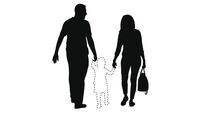Preventative moves must be made
The devastating impact of suicide has left the Limerick family in mourning for the third time in a short period of time.
Just two years ago the family was left shocked and traumatised when Mr Roche’s two brothers took their own lives within 48 hours of each other. That double tragedy spurred another brother to raise funds for a drug treatment centre in a bid to spare others the same fate.
















